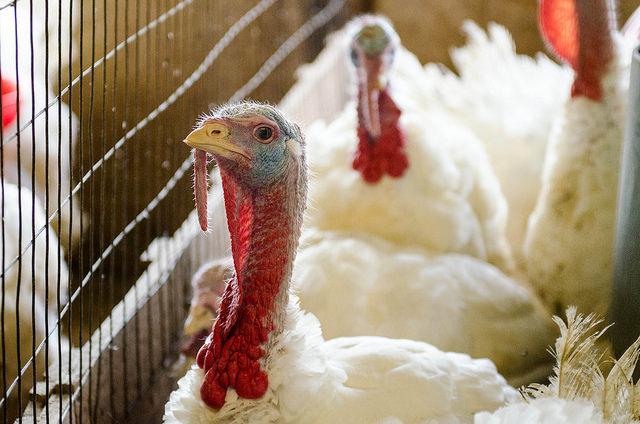A highly pathogenic H7N8 avian influenza strain that hasn't been seen in the United States before has struck a commercial turkey farm in southern Indiana, prompting the culling of about 60,000 birds, federal and state officials announced today.
The strain is different than the one that caused more than 200 outbreaks in US poultry last year and hasn't caused any known human infections, according to a statement from the US Department of Agriculture (USDA) Animal and Plant Health Inspection Service (APHIS).
Turkey deaths prompted testing
Deaths in the flock triggered the testing at the Indiana Animal Disease Diagnostic Laboratory at Purdue University, and the USDA confirmed the findings today.
APHIS is assisting Indiana officials with the outbreak response, and state officials have quarantined the affected farm. Extra surveillance is under way at other farms near the outbreak location, which is in Dubois County.
T. J. Myers, DVM, PhD, associate deputy administrator for veterinary services at APHIS, said at a press conference today, "It is a highly pathogenic virus, which means it is a significant virus that does need an immediate response in order to contain it and prevent spread to other facilities. Since the outbreak last year, and all the lessons learned from that, there has been a lot of good work to increase our preparatory efforts at the federal side, the state side, and the industry side.
"So we are hopeful that as we respond very quickly to this virus, that we can get it contained and hopefully not see an extensive outbreak like we did last year. But, again, we'll see how the days to come unfold."
Federal and state health officials emphasized that birds from the flock will not enter the food system, that avian influenza doesn't pose a food safety risk, and that the US Centers for Disease Control and Prevention considers the risk to humans to be very low.
The Indiana State Board of Animal Health (IBAH) said in a statement today that a company veterinarian took samples from the flock to the lab for testing after several hundred birds died.
State veterinarian Bret Marsh, DVM, said in the statement that the strain was unique to Indiana and the nation and isn't related to the strains that struck the upper Midwest last year or to an outbreak last May in a backyard flock in northeastern Indiana.
Indiana is the nation's fourth-largest turkey producer, the third-biggest egg producer, and first in duck production. The state's poultry industry is worth $2.5 billion.
Experts anticipate genetic details
Andrew Bowman, DVM, PhD, from the Animal Influenza Ecology and Epidemiology Program at The Ohio State University, told CIDRAP News that he doesn't yet know what to make of the new finding and is eager to see genetic sequences before making an assessment.
David Stallknecht, PhD, of the University of Georgia's College of Veterinary Medicine, said low-pathogenic H7 viruses were very common in wild birds last year—shorebirds and ducks.
Dave Halvorson, DVM, an avian health expert who is retired from the University of Minnesota, told CIDRAP News that so far there's no news on whether the genetic material from the H7N8 virus detected on the farm is from Eurasian or North American lineages.
"Once it has been sequenced there will be a search for related viruses in existing databases. H7 low-path viruses have been seen a few times in Midwestern turkeys for the last 8 or 9 years, and we'll be interested in whether the current H7 is related to those viruses," he said. Halvorson added that researchers are probably looking through their archives now for H7 viruses that might be related to the current outbreak.
So far it's unclear what the threat from H7N8 is to the US poultry industry, he said. "Southern Indiana does contain a large commercial turkey population, and we will have to wait to see whether this virus begins spreading rapidly in that area."
See also:
Jan 15 APHIS press release
Jan 15 IBAH statement
IBAH avian flu update page




















